January 23, 2022 - Visiting the JGL Pharmacy Museum in Rijeka, a modern cabinet of curiosities where vintage tablet-making machines meet the latest technology and elegant design
Tucked away in the Old town in Rijeka is one of the city’s most unique collections to discover. Explore the hissstory of pharmacy, says the snake on the wall, nudging us towards the entrance. Fear not - the snake is here as a symbol of health, rejuvenation and medicine, the mascot of the JGL Pharmacy Museum.
The specialised museum presents the history of pharmacy in a global context with a focus on Croatia and Rijeka in particular. Opened in October 2020, it was founded by the Croatian pharmaceutical company Jadran-Galenski laboratorij d.d. (hence the JGL in the name), whose vision is for the museum to become a reference institution in research of pharmacy history and a tourist attraction in Rijeka.
Based on what we’ve seen, it’s definitely an attraction. Albeit small, the permanent exhibit is a modern cabinet of curiosities where vintage tablet-making machines and hundreds of tiny vials and test tubes meet the latest technology and elegant design.
A wonderful garden of health (hortus sanitatis) featuring medicinal and other herbs covers the wall and guides you to the entrance:
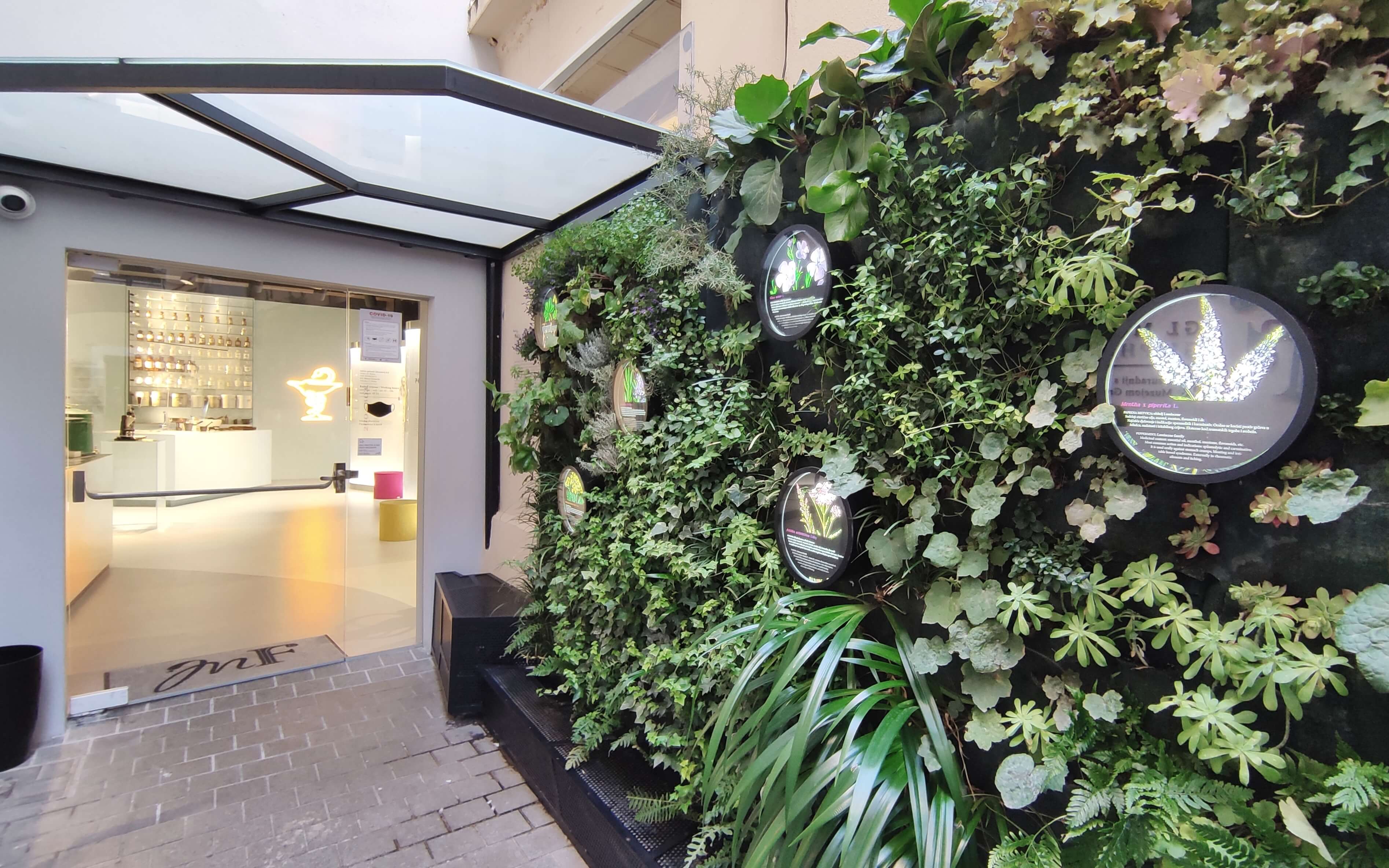
Inside, a sleek glass timeline snakes through the exhibition space and comes to life through AR, with distinguished individuals from the history of pharmacy telling their stories and teaching us a few interesting facts along the way.
You’d be perfectly fine just checking out the exhibits as the display is engaging enough as it is, but the AR points significantly add to the experience as they expand on the info presented on the panels, making the historical personalities more entertaining and lifelike - this will likely be a deciding factor if you’re visiting with kids. The AR guide is available in Croatian and English - pick up your tablet when purchasing tickets at the entrance.
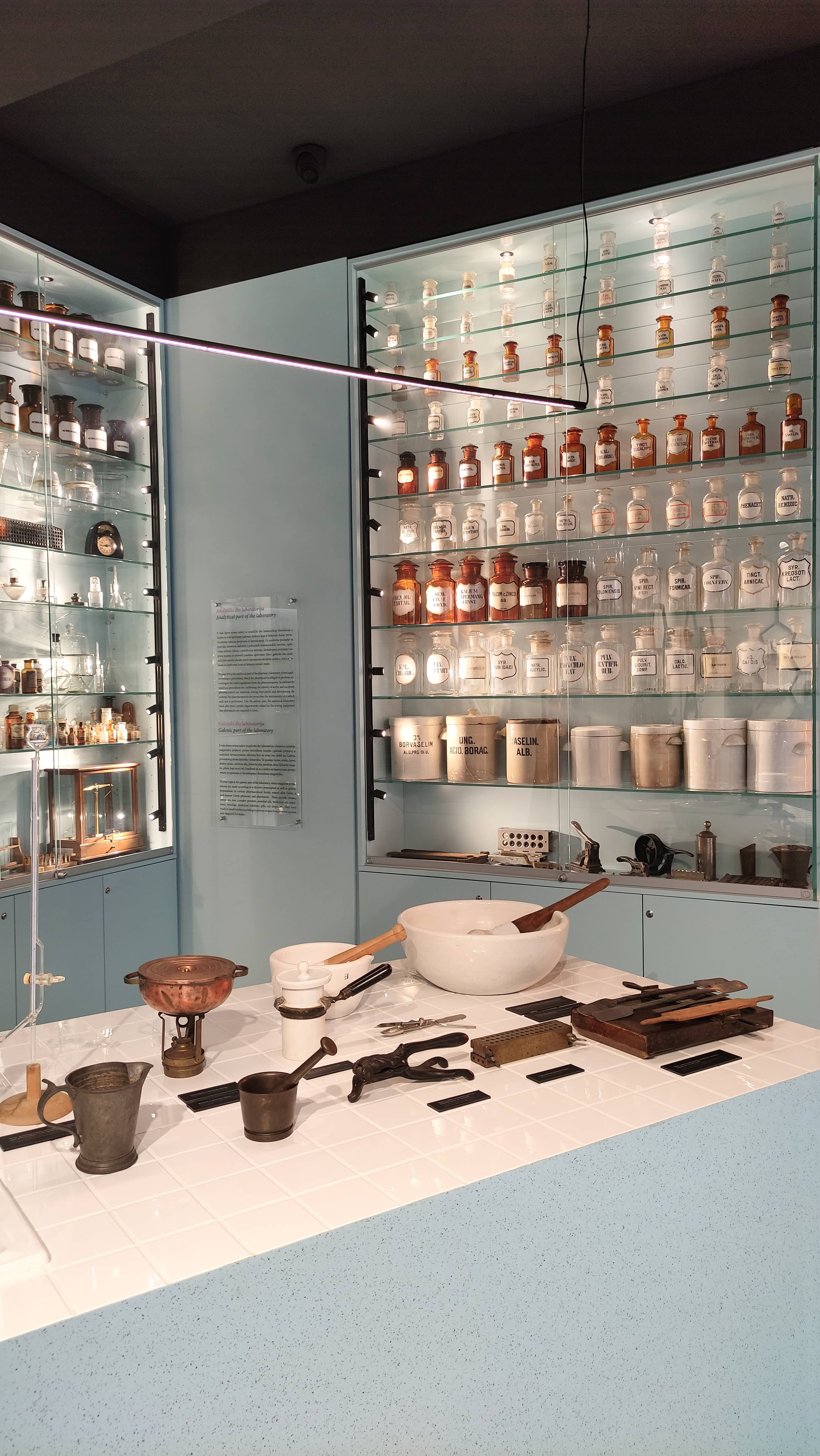
Here are a few things we learned to spark your curiosity:
- The inventor of diazepam was born in Opatija, Croatia! Chemist Leo Henryk Sternbach invented the medicine first marketed as Valium in the early 1960s, after he’d moved to the US where he worked for Hoffmann-La Roche. By the end of the 60s, Valium became the top-selling medicine in the US. Sternbach soon retired but didn’t rest on his laurels, instead going on to work at the lab and mentor students for another 30 years.
- The Dalmatian town of Trogir was home to the oldest pharmacy in Croatia; the establishment was specifically mentioned as a pharmacy in historical records as early as 1271!
- The first monastic pharmacy soon followed: the Friars Minor pharmacy in the Franciscan monastery in Dubrovnik was founded in 1317. The Croatian Ministry of Culture placed the Dubrovnik pharmacy on the list of intangible cultural heritage in 2019.
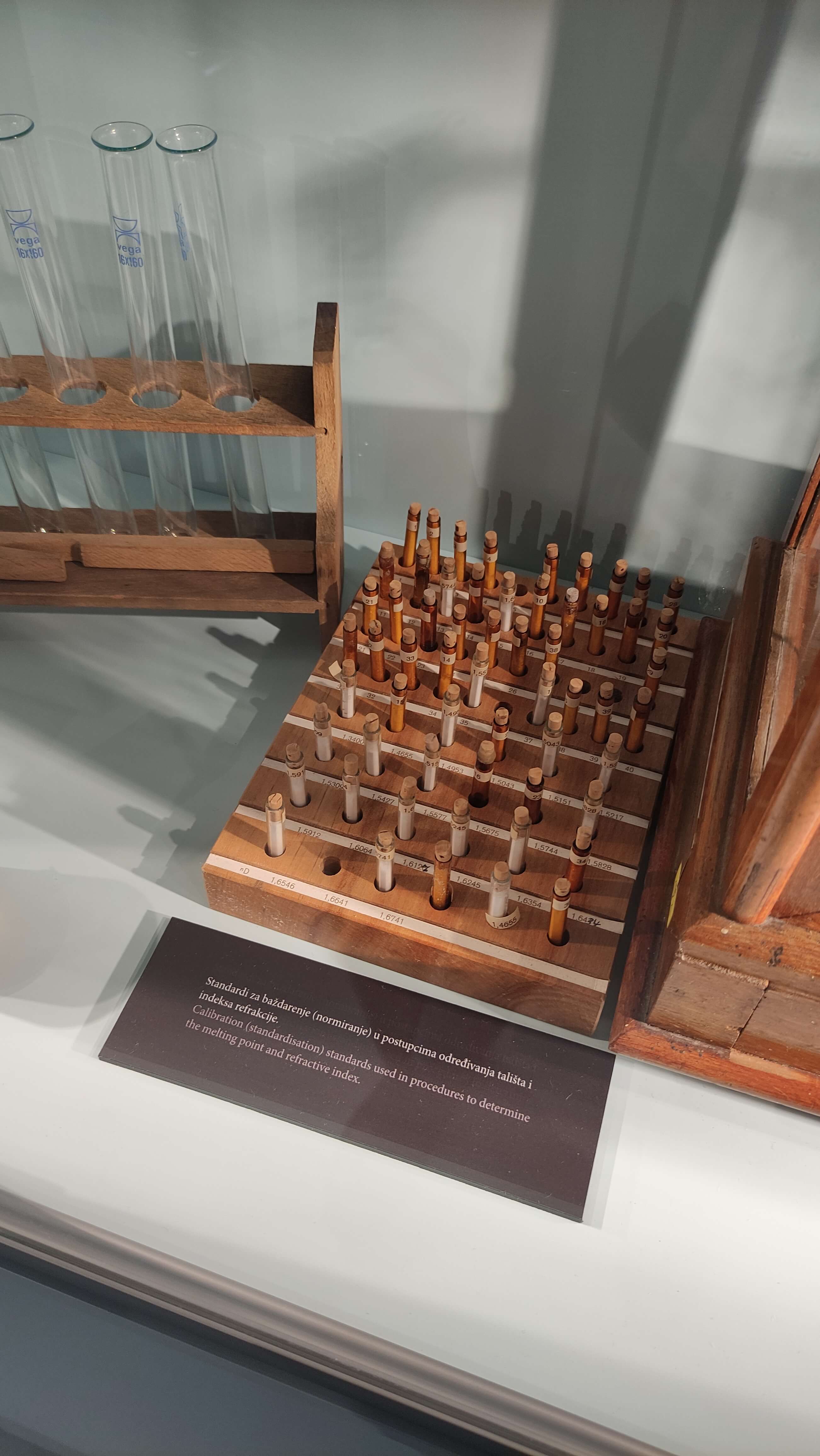
- Another nod to Dubrovnik as the first place in the world to introduce mandatory quarantine. In 1377, the Great Council of Dubrovnik passed a legislation that had all arrivals from areas ravaged by plague spend 30 days on Mrkan island before entering the city. (In comparison, today's isolation guidelines don't seem that harsh anymore.)
- Among the Nobel prize winners for chemistry are two Croats - a mentor and his protégé, Lavoslav Ružička and Vladimir Prelog. They were both involved in medicine development and won the Nobel prize in 1939 and 1975 respectively.
Hidden behind the timeline is the central exhibit, an impeccably recreated front-end space of a historic pharmacy (oficina) dating to the early 20th century.
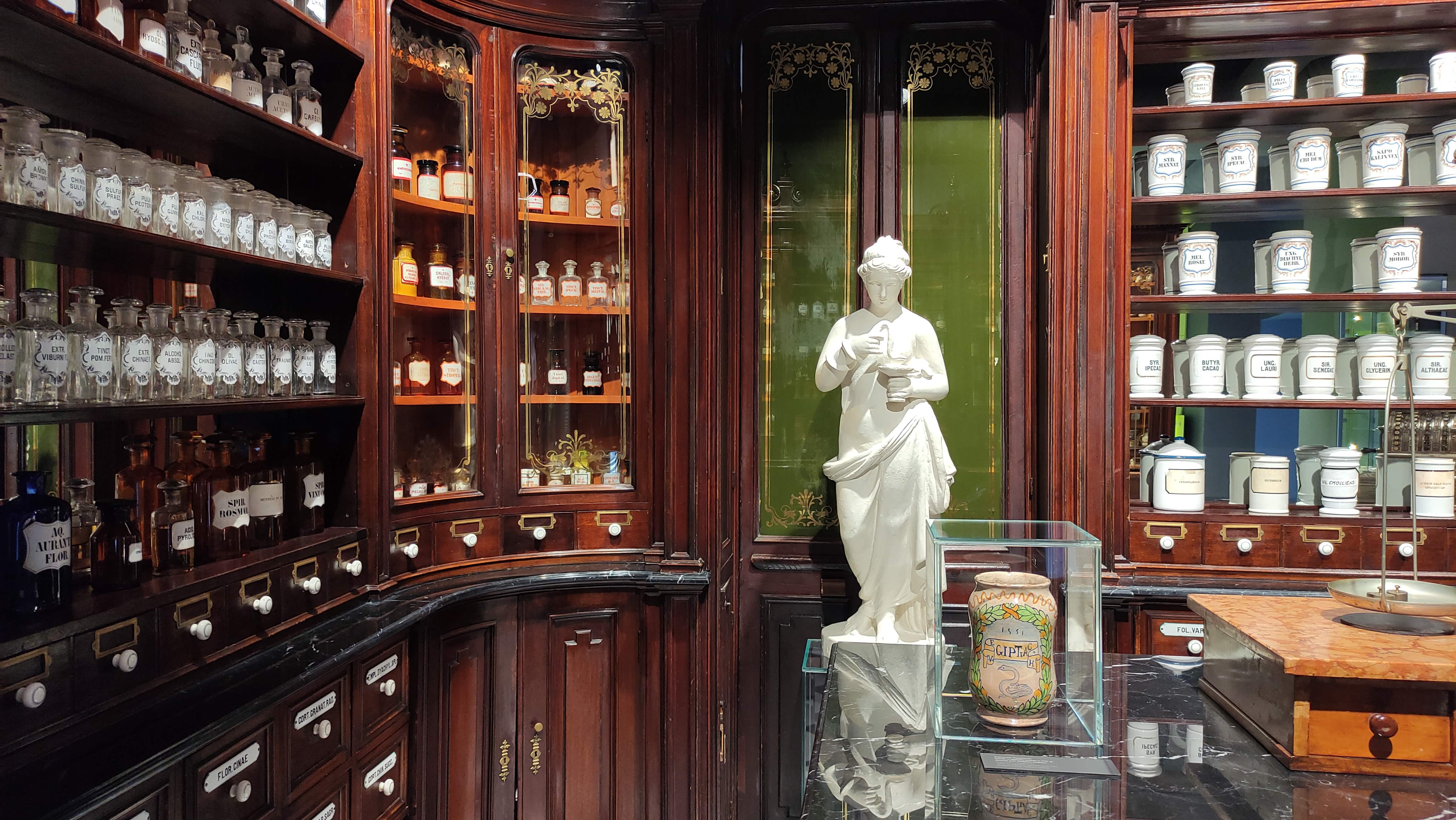
Front-end spaces were intended for the reception of patients, as well as preparation and dispensing of medicine. The one displayed here was in operation until 2019 in the pharmacy ‘Kolodvor’ near the railway station in Rijeka and comes complete with a pharmaceutical balance and a vintage cash register.
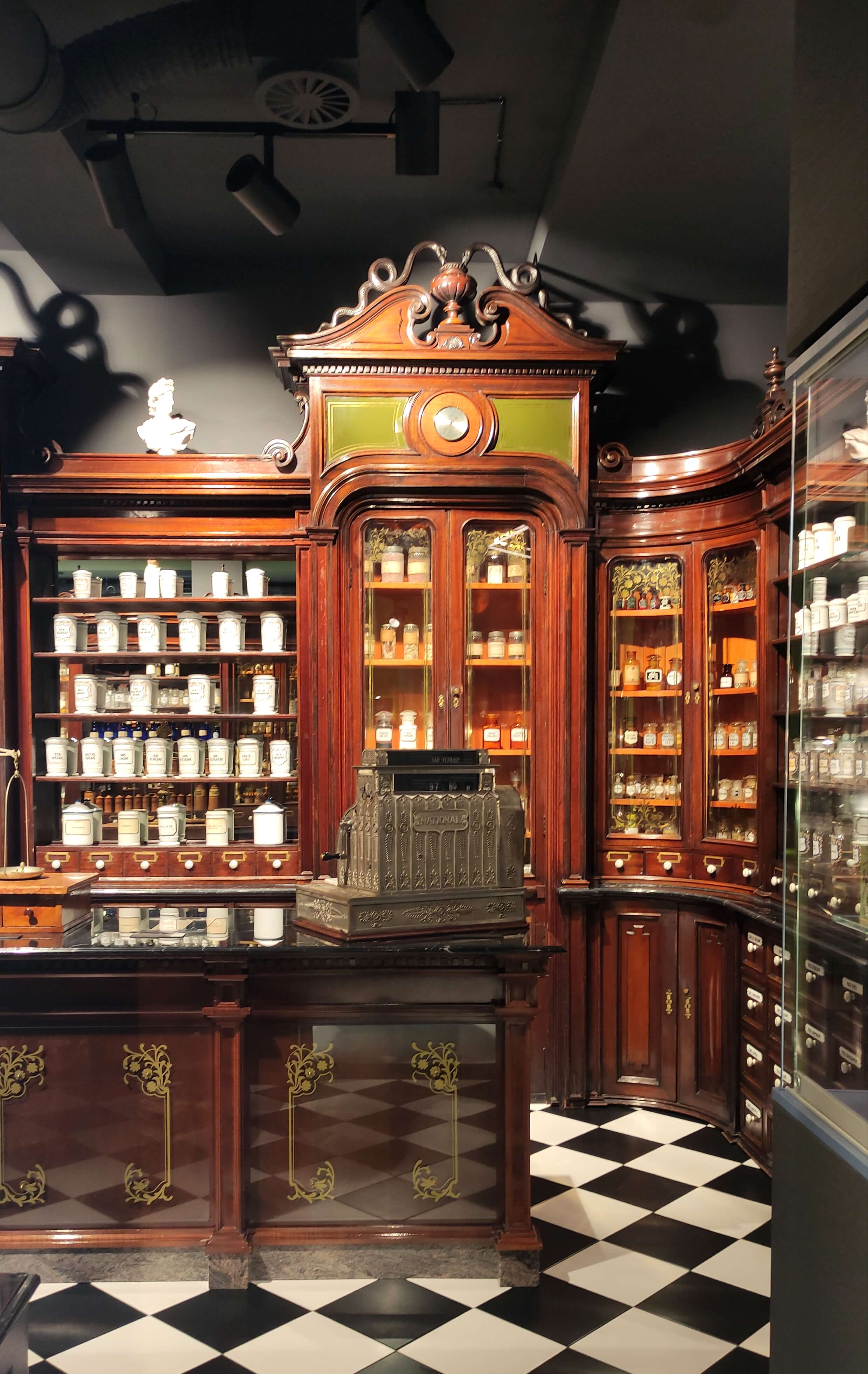
The exhibition gives us insight into local history as well, featuring two pharmaceutical companies from Rijeka, ‘Alga’ and ‘Ljekarna Jadran’. A pioneer not only in pharmaceuticals and cosmetics but in advertising as well, Alga was a marketing powerhouse and a household name in the interwar period. Their first product, named ‘Alga za masažu’ (massage algae), was made of natural extracts of native plants and was said to heal every malady from a toothache to influenza.
The ad below urges retailers to buy Alga in bulk and guarantees they’ll sell every single unit, or else they can return the unsold stock to the manufacturer:
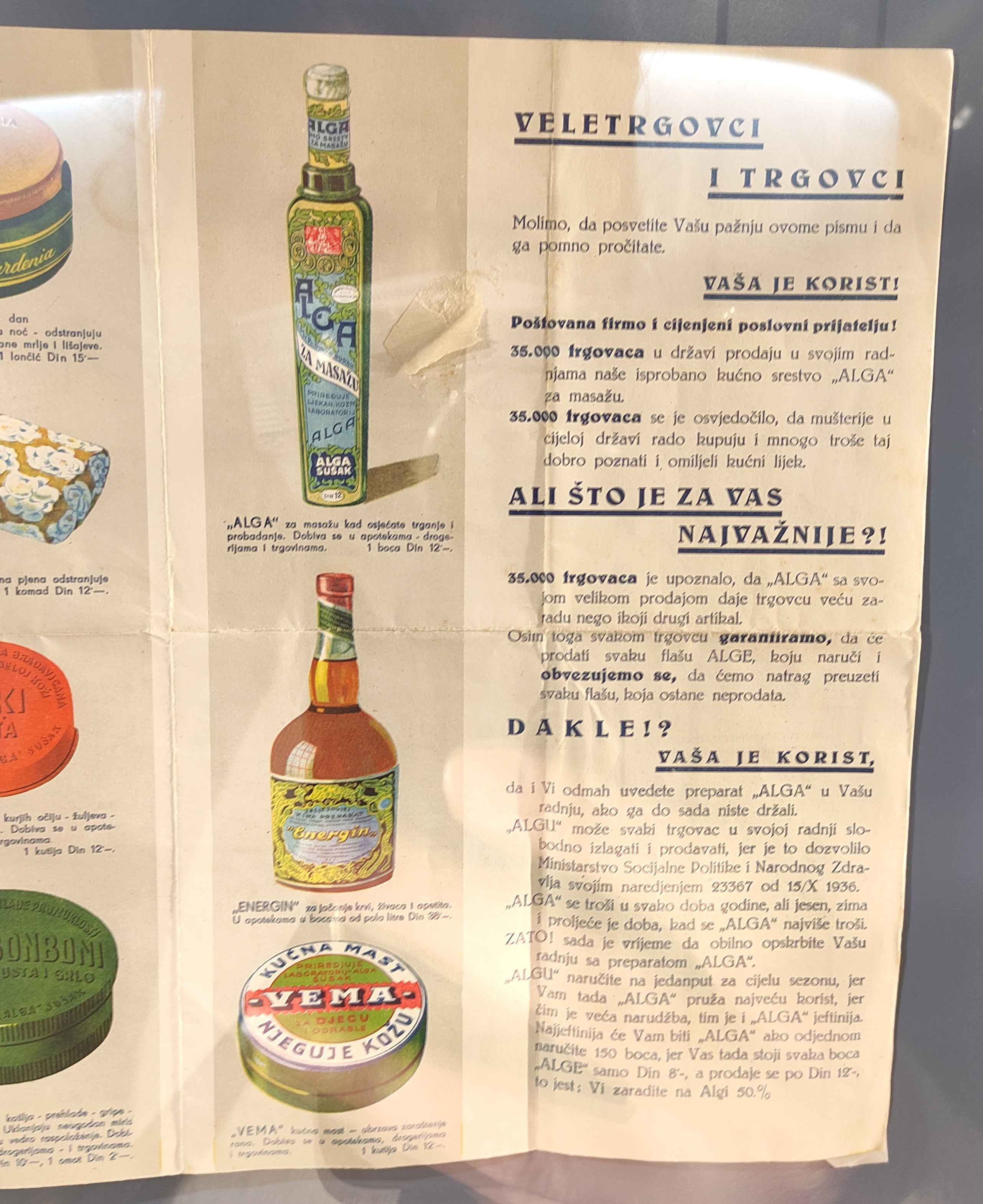
A section of the permanent exhibit is dedicated to medicinal herbs, including a modern twist on a herbarium and many cabinets and drawers to peek into:
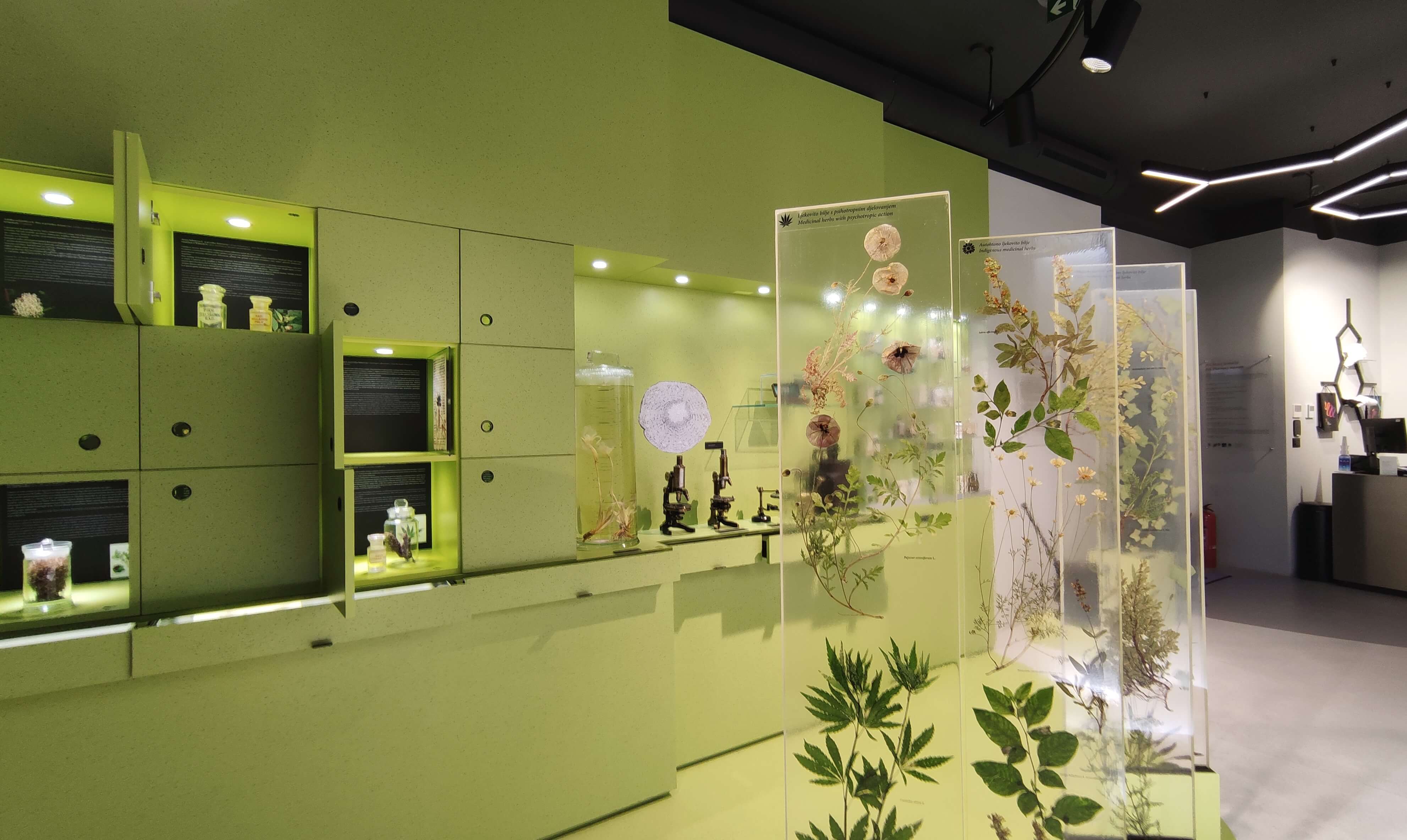
The entire display is superbly designed and allows the visitor to decide how much time and attention they want to dedicate to each exhibit; it doesn’t overwhelm with historical facts or scientific data, instead presenting information in an engaging and interactive way.
Indulge your obsession with historical curiosities and vintage bric-a-brac (just me?) and leave with a renewed appreciation for science. Overall, an excellent place to spend a Saturday afternoon.
Learn more about the JGL Pharmacy Museum on their website, and discover other attractions worth visiting in Rijeka in our guide here.


